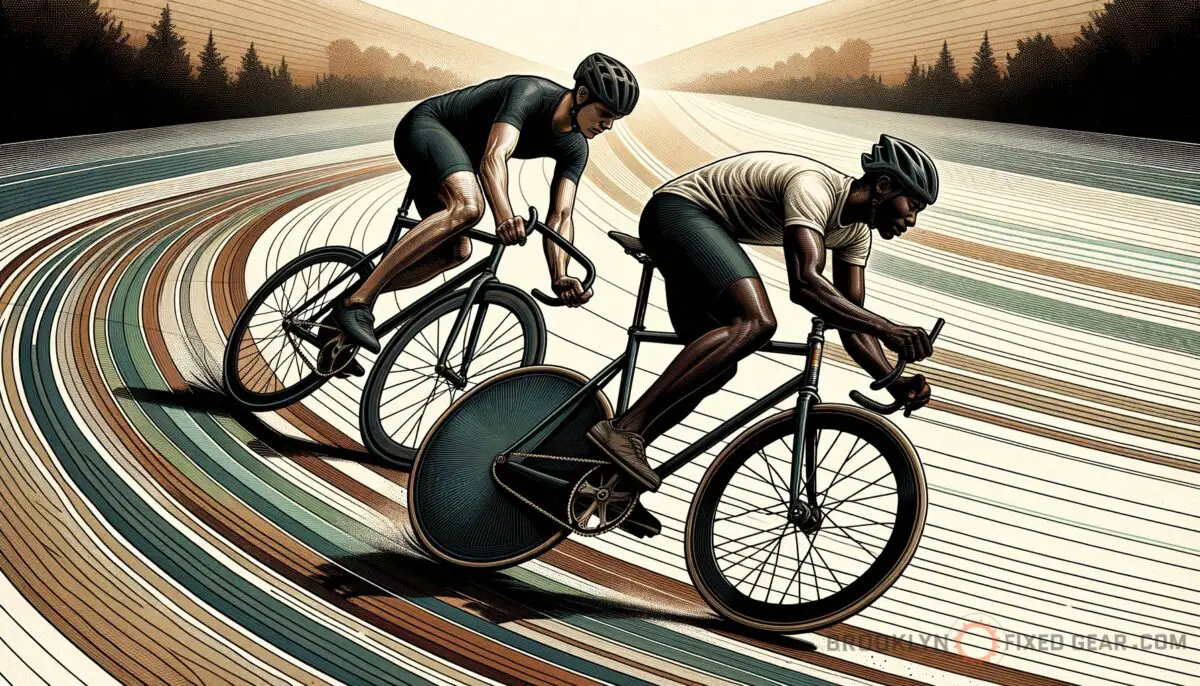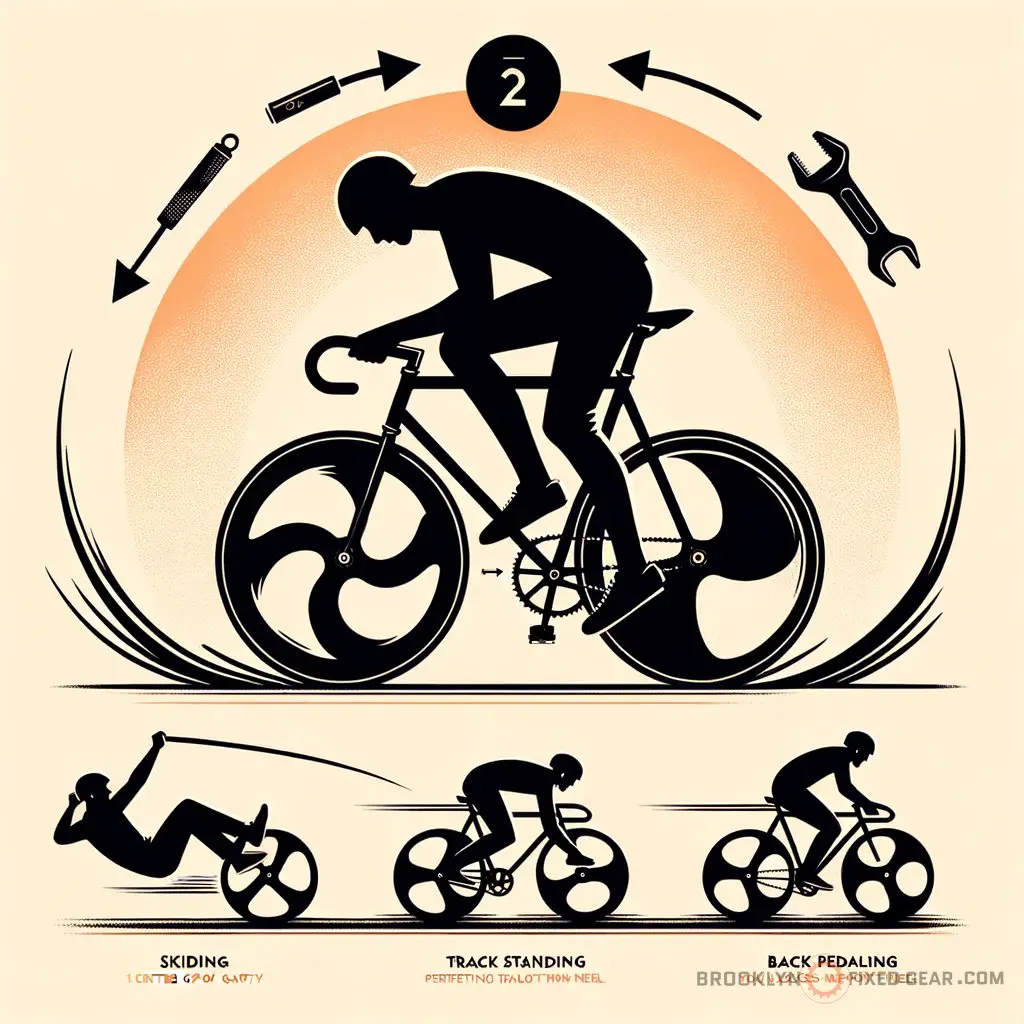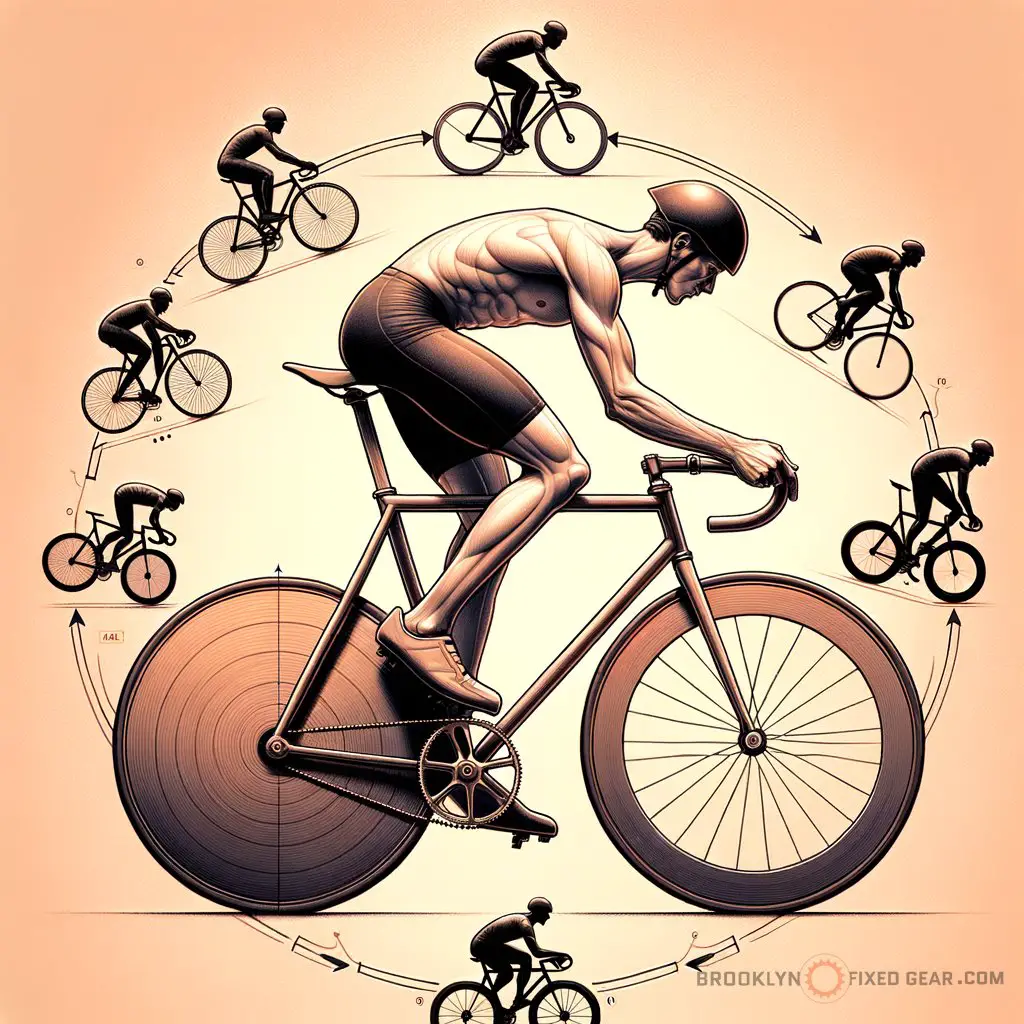Ever wondered how to push your fixed-gear cycling to new limits? What are the advanced riding techniques that can enhance your fixie experience? We’ll dive into the world of skidding, back pedaling, and track stands. Along the way, I’ll give you the scoop on top fixies that make mastering these skills even more thrilling.
Let’s explore the essentials and elevate your ride with the best fixie bikes .
Key takeaways
- Master skidding: It’s a crucial skill for stopping on a fixie and adds a cool factor.
- Practice track stands: They improve balance and are useful for urban cycling.
- Nail the back pedal: It’s essential for navigating tight turns and maintaining control.
Advanced riding techniques for fixed gear cyclists
Every dedicated fixie rider eventually craves that next level of challenge, and advanced riding techniques provide just that. First off, skidding is a quintessential skill. Not only does it look insanely cool, it also serves as an essential stopping technique on a bike without brakes.

Mastering the art of weight redistribution is key—you’ll want to get your center of gravity just over the front wheel as you lock up the rear. Don’t forget the importance of a sturdy set of handlebars to grip during this maneuver; check out these recommended handlebars for your fixie.
- Track standing is next on the list, helping you balance at a standstill—vital for city riding and impressing your cyclist buddies. This one’s all about subtle bike control, slight movements back and forth. Keep calm and steady.
- As for back pedaling, it’s about rhythm and finesse—perfecting this will improve your ability to navigate tight turns and maintain control at speed.
Remember, regular practice in a safe area will help solidify these techniques. And for those times when things don’t go exactly as planned, having a trusty bike multi-tool can be a life-saver.
I’ve got to say, I’m no track bike racer, but these techniques— they’re an art form . There’s a simple beauty in the way a seasoned fixie rider can make a bike dance. It’s like that one scene in “Quicksilver” when Kevin Bacon is just owning the streets of NYC on his bike, you feel the groove in every pedal push.
I’ve seen riders turn heads in the park with nothing but their fixed gear and a slick series of back peddles, it’s nothing short of poetry in motion, if you ask me. If you’re feeling uncertain, remember—even the pros had their shaky first skids. It’s all about the ride, the road, and how much heart you put into it.
And should you need any tips on preventing those aches and pains from hitting you after a day of riding, make sure you’re up on bike fitting and injury prevention .
State Bicycle Co. Black Label 6061

State Bicycle Co. Black Label 6061
Mastering skids and stops on a fixie
Learning to skid is more than just a cool party trick; it’s an essential stopping technique for fixie riders. The key to a proper skid is shifting your weight onto the front wheel while locking your legs to halt the rear wheel’s motion. This can wear down your tire quickly, so use it sparingly and make sure you’re equipped with durable tires to withstand the pressure.
- Pick the right gear ratio for skidding
- Drop by for a look at the best fixie bikes tailored for easy skidding.
- Perfecting the technique
- Learn about unilateral vs. bilateral power in cycling to understand how your power output affects skidding.
Track stand like a pro
A track stand allows you to pause without putting your foot down – essential for urban riders at traffic lights. This skill requires balance and focus; slight movements keep you upright while zero forward motion is necessary. Start practicing in a flat, empty space before hitting the streets.

- Practicing the balance point
- Check out neuromuscular training for cyclists to improve your control and balance.
- Translating practice to the city streets
- Stay safe in traffic—leverage these eccentric cycling benefits to help improve your balance.
Back pedaling on a fixed-gear bike allows for tighter control during turns and helps maintain a consistent cadence. It’s vital to anticipate the turn and adjust your pedal speed accordingly to avoid pedal strike, which can throw you off balance.
- Understanding pedal speed and control
- Take a deep dive into how mindfulness in competitive cycling can enhance your focus for better control.
- Avoiding pedal strike
- Gear up with the right knowledge and accessories, such as the best bike multi-tools for adjustments.

How to choose a fixie for advanced techniques
The right bike makes all the difference in performing advanced maneuvers. Consider the frame, wheels, and gear ratio when choosing a fixie for advanced riding.
- Consider frame geometry and materials
- For insights on perfected fit, look at how to choose a bike saddle.
- Selecting the optimal gear ratio
- Mistakes are common; avoid them with insights on common mistakes made when building a fixie.
Riding nutrition and recovery for fixed gear cyclists
Your body needs proper fuel and recovery, especially when performing intense fixed-gear cycling techniques. Pre-ride meals and post-ride recovery strategies are vital.
- Pre-ride meals for sustained energy
- Understand how to stay energized with pre-ride meals and endurance.
- Post-ride recovery and injury prevention
- Learn about recovery with insights from bike fitting and injury prevention.
Exploring the perfect fixie setup for advanced techniques
The ideal fixie setup can significantly enhance your ability to perform advanced cycling maneuvers. This data table showcases the key components and their features that can either make or break your fixie performance.
| Component | Feature | Importance for Advanced Techniques |
|---|---|---|
| Frame | Light and robust | Provides stability and agility |
| Handlebars | Ergonomic and firm grip | Aids in control during skids |
| Gear Ratio | Balanced for skidding | Facilitates easier stopping |
| Tires | Durable and skid-friendly | Endures the wear from skid stops |
| Saddle | Comfortable and adjustable | Ensures efficiency during maneuvering |
Mastering the art of weight redistribution and locking up the rear wheel can turn stopping into a visual spectacle, as much about style as it is about function. Like all great things, though, it comes with a price—the wear on your tires, and a mistake can cost more than just a tire change. Always engage with these techniques mindfully, balancing risk and flair.
For the best components that blend these features seamlessly, check out the latest fixie bike parts .
All about optimizing your fixie for the best riding experience.
More advanced riding tips
When honing your fixie riding skills, it’s usually the small adjustments that make a big difference. Beyond mastering skids and track stands, these extra nuggets of wisdom will have you riding smoother and impressing your fixie crew in no time.
- Ride regularly to build muscle memory and confidence in your bike handling.
- Watch and learn from experienced fixed-gear cyclists – there’s no better teacher than observation.
- Incorporate HIIT workouts into your cycling routine to boost your power for techniques like skidding; find out which is better for cycling, HIIT vs. endurance.
- Ensure your bike is regularly maintained to avoid malfunctions that could hinder technique execution – a multi-tool for cyclists is indispensable.
- Visualize your movements before executing them to improve technique.
- Always keep safety in mind; wear a helmet and consider knee and elbow pads when practicing new skills.
Before hitting the streets, make sure you know the dos and don’ts of advanced fixie riding:
| Do | Don’t |
|---|---|
| Practice in a safe, traffic-free area | Attempt new techniques in busy traffic |
| Use proper safety gear | Neglect bike maintenance |
| Keep a relaxed posture to stay nimble | Lock your elbows and knees |
| Start with small goals and progress slowly | Rush the learning process |
Crucial pointers for both novice and seasoned cyclists to stay safe and ace their riding game.
Advantages and disadvantages of advanced fixed-gear cycling techniques
Taking on advanced techniques with your fixie not only ramps up the thrill but also sharpens your cycling skills. Let’s weigh the ups against the downs to see if these stunts line up with your fixie lifestyle.
Advantages
- Improves balance and bike handling
- Increases ability to stop quickly without traditional brakes
- Enhances overall control, especially in urban riding situations
- Boosts the aesthetic appeal of riding – you look cool doing it
Disadvantages
- Can be harsh on the bike components, leading to more wear and tear
- Potentially higher risk of injury if performed incorrectly or without protective gear
- Steeper learning curve compared to conventional cycling techniques
- Might take a while to master, requiring patience and persistence
If you are a visual learner, check out this video titled ‘How To Ride A Fixed Gear Bike’
Frequently asked questions (FAQ)
What gear ratio is best for beginners practicing advanced fixie techniques?
For beginners, a gear ratio that’s not too aggressive is ideal. It facilitates easier learning of techniques such as skids and allows for better control. A common starter ratio could be around 2.75 to 3.0 (44/16 or 48/16).
As your skills develop, you might tweak the gear ratio to find what’s most comfortable and efficient for your style.
Can advanced fixed-gear cycling techniques be performed on any fixie bike?
While most fixed-gear bikes can be used to perform advanced techniques, some are better suited for this than others. You’ll want to look for a bike with a sturdy frame, responsive handling, and quality components that can withstand the more stress of maneuvers like skidding and track stands.
How do I improve my balance for successful track stands?
Improving your balance for track stands involves both practice and physical training. Balance-centered exercises like yoga or pilates can significantly enhance your core strength and stability. When practicing on your bike, start on a slight incline which can help with maintaining the stand without rolling backward.
Focus on tiny movements and distributing your weight evenly through both wheels.
Final thoughts
As we’ve cruised through the ins and outs of advanced riding techniques for fixed gear cyclists, it’s clear that these skills are about more than just showing off. They can upgrade your urban riding experience and offer practical benefits, too. With practice, the right setup, and mindful technique, you can make these advanced moves part of your cycling repertoire.
So grab your fixie, hit a safe spot, and start practicing those skids, track stands, and controlled back pedaling maneuvers.
How has your experience with skidding or track stands changed your perception of riding a fixie? Did I cover everything you wanted to know? Let me know in the comments section belowI read and reply to every comment . If you found this article helpful, share it with a friend, and check out my full blog for more tips and tricks on mastering fixed-gear cycling.
Thanks for reading and keep spinning those wheels with confidence!















